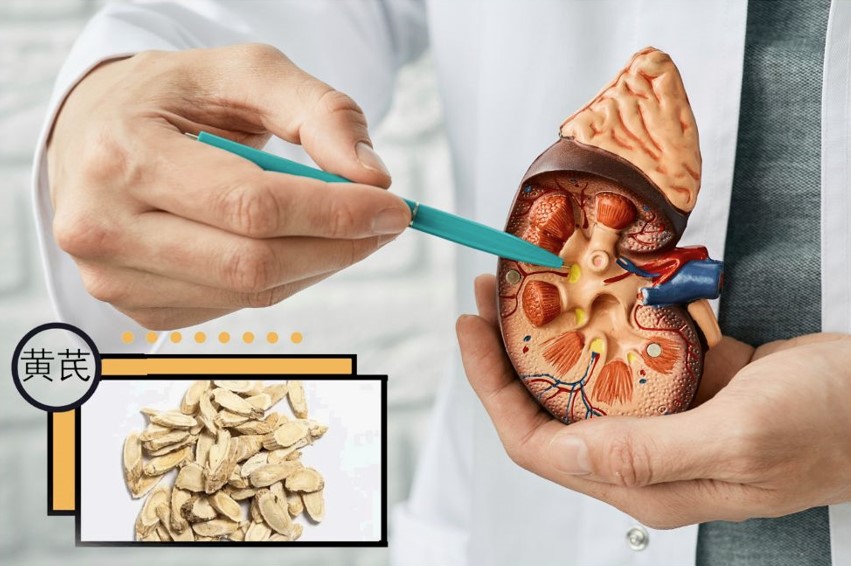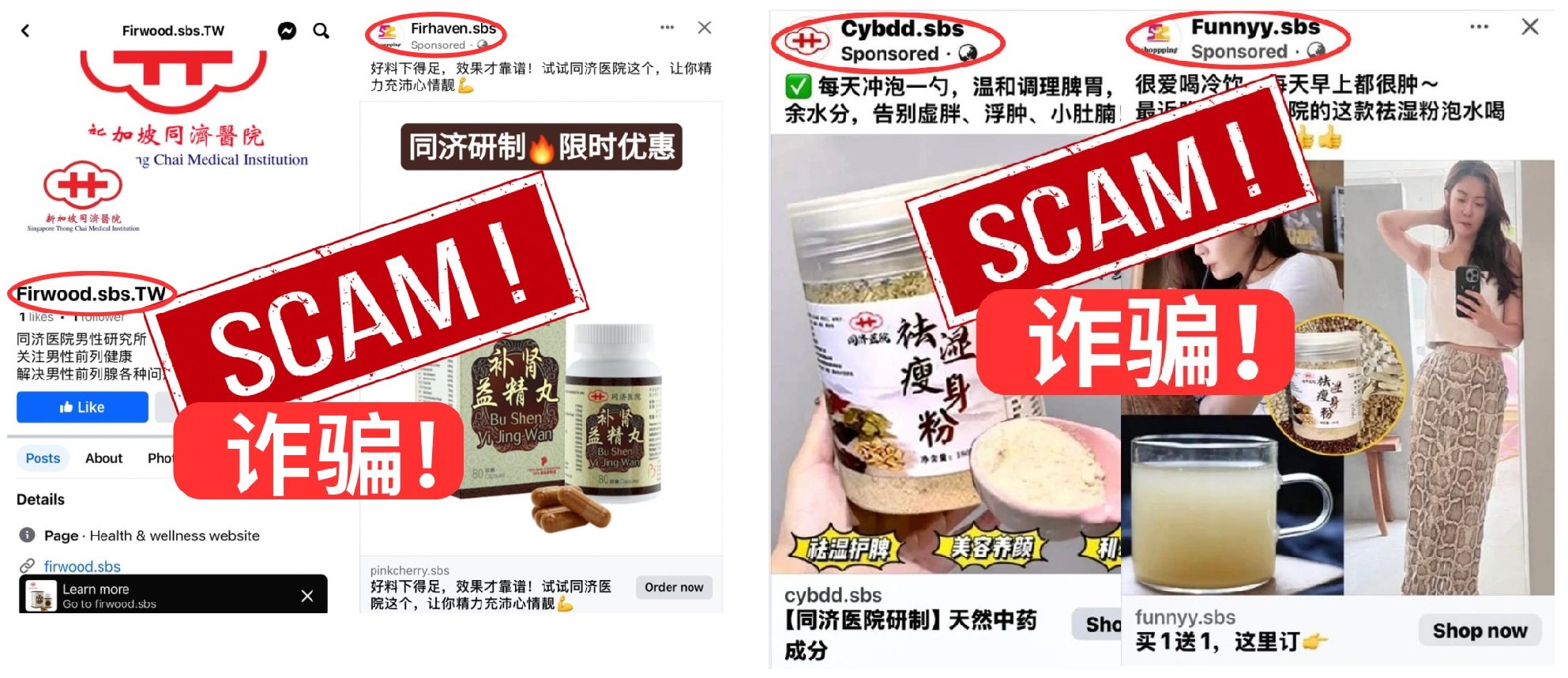Astragalus membranaceus (AM), also known as Huangqi (黄芪),is a prominent herb in Traditional Chinese Medicine (TCM), is widely utilized in the management of nephrotic syndrome (NS). Characterized by symptoms such as fluid overload, peripheral edema, and proteinuria, nephrotic syndrome is a complex renal condition. AM is a key component in many TCM formulations aimed at treating primary nephrotic syndrome. This review evaluates the evidence supporting AM’s immunoregulatory activities, its mechanisms of action in glomerular pathology, and the efficacy and safety of AM-containing TCM formulations compared to standard Western medicine (WM) treatments.
Mechanisms of Action: AM is believed to exert its effects through several mechanisms:
- Immunoregulation: AM modulates immune responses, potentially reducing inflammation and enhancing renal protection.
- Anti-inflammatory Effects: It impacts key cytokines involved in inflammation, such as IL-1, IL-6, IL-8, and TNF-α, thereby mitigating renal damage.
- Renal Protection: AM may help preserve renal function by reducing proteinuria and hyperlipidaemia, which are common in nephrotic syndrome.
Evidence from Clinical Studies: A comprehensive review of randomized controlled trials (RCTs) comparing AM-containing TCM formulations with standard WM treatments reveals the following findings:
- Biochemical Improvements: AM supplementation has been associated with significant improvements in biochemical markers, including a reduction in proteinuria, hyperlipidemia, and an increase in serum albumin levels.
- Renal Function: The addition of AM to standard WM treatment often results in preserved or improved renal function.
- Remission Rates: Patients receiving AM-containing TCM formulations show higher remission rates compared to those treated with standard WM alone.
- Inflammatory Markers: Significant reductions in inflammatory cytokines (IL-1, IL-6, IL-8, TNF-α) were observed in AM-treated groups versus those receiving steroid-alone treatments.
- Reduced Relapse Rates: Some studies indicate a lower incidence of relapse in patients treated with AM compared to control groups.
- Safety Profile: AM was generally well-tolerated with no significant difference in adverse events (AEs) or side effects compared to standard WM treatments. Dosages used in studies ranged from 9 to 30 grams per day, within the range recommended by the Chinese Pharmacopoeia.
Concerns regarding potential interactions between AM and immunosuppressive medications have been noted. In vitro studies yield mixed results, and the complexity of TCM formulations, which often include multiple herbs, adds to the challenge of isolating specific interactions. However, drug level monitoring for immunosuppressants such as cyclosporine and tacrolimus can help manage potential issues of drug exposure.
In conclusion, the available evidence supports the clinical benefit of Astragalus membranaceus as an adjunctive therapy in the management of primary nephrotic syndrome. While the Jadad scores of the RCTs reviewed are generally low, indicating a need for higher-quality studies, the consistent positive outcomes suggest that AM may enhance remission rates and improve disease markers without significantly increasing adverse effects. Further research with rigorous methodologies is warranted to better understand the long-term effects and optimal usage of AM in nephrotic syndrome management.
References
- Block KI, Mead MN. Immune system effects of echinacea, ginseng, and astragalus: A review. Integrative Cancer Therapies. 2003, 2(3), 247-267.
- 曹广海, 魏磊, 田明, 等. 防己黄芪汤合越婢汤加减联合西药治疗小儿肾病综合征的临床效果观察. 中国中西医结合肾病杂志.2020,21(12):1064-1066.
- 陈静, 陈师群. 黄芪颗粒预防儿童肾病综合征感染的临床观察. 中国中西医结合杂志,2008,28(5):467-469.
- Chen Y, Deng Y, Ni Z, et.al. Efficacy and safety of Traditional Chinese Medicine (Shenqi Particle) for patients with Idiopathic Membranous Nephropathy: A multicenter randomized controlled clinical trial. American Journal of Kidney Diseases. 2013, 62(6), 1068–1076.
- Chen Z, Liu L, Gao C, et.al. Astragali Radix (Huangqi): A promising edible immunomodulatory herbal medicine. Journal of Ethnopharmacology. 2020:112895.
- Chu DT, Wong WL, Mavligit GM. Immunotherapy with Chinese medicinal herbs. I. Immune restoration of local xenogeneic graft-versus-host reaction in cancer patients by fractionated Astragalus membranaceus in vitro. Journal of clinical & laboratory immunology. 1988,25(3),119–123.
- Chu D T, Wong W.L, Mavligit GM. Immunotherapy with Chinese medicinal herbs. II. Reversal of cyclophosphamide-induced immune suppression by administration of fractionated Astragalus membranaceus in vivo. Journal of clinical & laboratory immunology. 1988,25(3):125–129.
- Cosyns JP. Aristolochic acid and ‘Chinese herbs nephropathy’: a review of the evidence to date. Drug Safety. 2003,26(1):33–48.
- 范德墉, 马基康. 环磷酰胺冲击疗法联合参芪地黄汤治疗成人难治性肾病综合征的临床研究.中华中医药学刊. 2014,32(2):435-437.
- Feng M, Yuan W, Zhang R, et.al. Chinese herbal medicine Huangqi type formulations for nephrotic syndrome. Cochrane Database of Systematic Reviews. 2013(6)
- Gallagher MP, Kelly PJ, Jardine M, et.al. Long-term cancer risk of immunosuppressive regimens after kidney transplantation. Journal of the American Society of Nephrology. 2010,21(5):852–858.
- Giorgi A. (2019, January 9). About Immunosuppressant Drugs. Healthline. Available at: https://www.healthline.com/health/immunosuppressant-drugs. [Accessed: 4 June 2019]
- Gong A, Duan R, Wang HY, et.al. Evaluation of the Pharmaceutical Properties and Value of Astragali Radix. Medicines (Basel, Switzerland). 2018,5(2):46.
- 黄芳. 防己黄芪汤联合泼尼松治疗肾病综合征临床观察. 光明中医. 2020,35(13):2060-2062.
- 黄健光. 中西医结合治疗小儿难治性肾病的临床分析. 蛇志. 2010,22(3):227-228.
- Jadad AR, Moore RA, Carroll D, et.al. Assessing the quality of reports of randomized clinical trials: Is blinding necessary? Controlled Clinical Trials. 1996,17(1):1–12.
- 康国贵. 黄芪颗粒对儿童单纯性肾病综合征继发感染预防的初步探讨. 中国中西医结合肾病杂志. 2005,6(12):718-719.
- Kelepouris E, Rovin BH. 2021. Overview of heavy proteinuria and the nephrotic syndrome. In Richard J Glassock, Albert Q Lam (Ed), UpToDate (Accessed on 17 July 2021).
- Lau C, Mooiman KD, Maas-Bakker RF, et.al. Effect of Chinese herbs on CYP3A4 activity and expression in vitro. Journal of Ethnopharmacology. 2013,149(2):543–549.
- 雷帅兵. 他克莫司联合黄芪赤风汤治疗老年特发性膜性肾病. 河南中医研究. 2020,29(3):476-477.
- Li J, Liu, Z, Chen R, et.al. The quality of reports of randomized clinical trials on traditional Chinese Medicine treatments: A systematic review of articles indexed in the China National Knowledge Infrastructure database from 2005 to 2012. BMC Complementary and Alternative Medicine. 2014,14(1):362.
- 李士旭. 加味防己黄芪汤联合醋酸泼尼松片治疗肾病综合征对肾功能及炎症指标的影响. 实用中医药杂志. 2020,36(5):641-642.
- 李晓妍, 王华. 玉屏风颗粒对儿童肾病综合征患者免疫功能的影响. 河南医学研究. 2016,25(11):1927-1929.
- 刘天媚, 陈元史, 邓行行. 加味防己黄芪汤联合激素治疗对小儿原发性肾病综合征肾功能、血脂及血凝状态的影响. 世界中医药. 2019,14(4):950-953.
- Liu W, Liu G, Liu J. Effects of Astragaloside IV on the pharmacokinetics of omeprazole in rats. Pharmaceutical Biology. 2019,57(1):449–452.
- 马娜, 王建萍, 刘熙如. 加味防己黄芪汤治疗原发性肾病综合征50例. 河南中医. 2019,39(2):180-183.
- McCulloch M, See C, Shu X, et.al. Astragalus-Based Chinese herbs and Platinum-Based chemotherapy for Advanced Non–Small-Cell lung Cancer: Meta-analysis of randomized trials. Journal of Clinical Oncology. 2006,24(3):419–430.
- Pao LH, Hu O YP, Fan HY, et.al. Herb-Drug interaction of 50 Chinese herbal medicines on CYP3A4 activity in vitro and in vivo. The American Journal of Chinese Medicine. 2012,40(01):57–73.
- 邱建军, 解冰. 清热解毒活血汤联合西药治疗难治性肾病综合征疗效观察. 吉林中医药.2007,27(10):16-17.
- Roberts MB, Fishman JA. Immunosuppressive Agents and Infectious Risk in Transplantation: Managing the “Net State of Immunosuppression”. Clin Infect Dis. 2021,73(7):e1302-e1317.
- Song J, Meng L, Li S, et.al. A combination of Chinese herbs, Astragalus membranaceus var. mongholicus and Angelica sinensis, improved renal microvascular insufficiency in 5/6 nephrectomized rats. Vascular Pharmacology. 2009, 50(5-6):185–193.
- Su G, Iwagami M, Qin X, et.al. Kidney disease and mortality in patients with respiratory tract infections: A systematic review and meta-analysis. Clinical Kidney Journal. 2020,14(2):602–611.
- 苏励, 茅建春, 顾军花. 环磷酰胺联合大剂量黄芪注射液静脉滴注治疗狼疮性肾炎. 中西医结合学报. 2007,5(3):272-275.
- 孙宏, 杨曦. 加味防己黄芪汤治疗原发性肾病综合征临床观察. 光明中医. 2020,35(9):1340-1343.
- Sun V, Hersh EM, Talpaz M, et.al. Immune restoration and/or augmentation of local graft versus host reaction by traditional Chinese medicinal herbs. Cancer. 2006,52(1):70–73.
- 王海燕, 李惊子, 潘缉圣, 等. 中药黄芪当归合剂对肾病综合征肾损伤的保护作用及对代谢紊乱的影响. 北京大学学报(医学版). 2002,34(5):542-552.
- 王群林. 参芪地黄汤加减方联合他克莫司及小剂量激素治疗特发性膜性肾病的临床研究. 山东中医药大学硕士学位论文. 2016.
- 王元真, 赵汉儒, 林丽娟.黄芪当归合剂联合他克莫司对难治性肾病综合征患者免疫功能及肾功能的影响. 上海中医药杂志. 2019,53(6): 58-60.
- 王召伦.中西医结合治疗难治性肾病综合征的疗效观察. 亚太传统医药. 2010,6(2):40-41.
- 谢晓玲, 彭芸. 黄芪辅助治疗肾病综合征及预防反复感染疗效观察. 湖北中医杂志. 2010,32(5):9-10.
- 杨爱华, 孙晔. 黄芪配合泼尼松治疗原发性肾病综合征35例疗效分析.农垦医学. 2000,22(6):395-396.
- 杨协清.黄芪颗粒联合激素对原发性肾病综合征患儿血尿白介素的影响. 中国药师. 2013,16(8):1202-1204.
- 于力,卓美瑛,杨小苏,等. 黄芪注射液对肾病综合征细胞因子及其基因表达的影响. 中国中西医结合肾病杂志. 2001,2(9):523-525.
- Yu SY, OuYang HT, Yang JY, et.al. Subchronic toxicity studies of Radix Astragali extract in rats and dogs. Journal of Ethnopharmacology. 2007,110(2):352–355.
- 于跃. 参芪汤联合他克莫司治疗脾肾两虚型Ⅰ-Ⅱ期膜性肾病临床观察. 黑龙江中医药科学院硕士学位论文. 2015.
- 袁慧中, 谢放, 张春天. 黄芪与红枣在常复发型原发性系膜增生性肾炎肾病综合征激素减量过程中的应用. 中国中西医结合肾病杂志. 2004,5(7):413-414.
- Zhang K, Pugliese M, Pugliese A, et.al. Biological active ingredients of traditional Chinese herb Astragalus membranaceus on treatment of diabetes: a systematic review. Mini reviews in medicinal chemistry. 2015,15(4):315–329.
- Zhang Y, Huang L, Bi H, et.al. Study of the upregulation of the activity of cytochrome P450 3A isoforms by astragalus injection and astragalus granules in rats and in cells. European Journal of Drug Metabolism and Pharmacokinetics. 2012,38(2):105–113.
- Zhang Y, Sun S, Li S, et.al. Laws of TCM Syndromes of Refractory Nephrotic Syndrome and Characteristics of Chinese Medicinal Herbs Used: A Data Mining Based on Literature. Journal of Liaoning University of TCM. 2018,20(3):149-153.
- 赵翠, 贾利敏, 陈保春,王自强,房晓芳,魏迪,杜书同. 健脾益肾活血中药方治疗不典型膜性肾病的疗效观察及血栓弹力图变化.中国中医药科技. 2020,27(1):62-64.
- 赵辉. 黄芪地黄汤联合西药治疗难治性肾病综合征的效果观察. 中国疗养医学. 2018,27(12):1310-1312.
- 赵学兰, 林松娟, 肖青. 黄芪当归合剂配合西医治疗原发性肾病综合征. 中国中西医结合肾病杂志. 2001,2(1):23-25..
- Zou C, Su G, Wu Y, et.al. Astragalus in the prevention of upper respiratory tract infection in children with nephrotic syndrome: Evidence-based clinical practice. Evidence-Based Complementary and Alternative Medicine. 2013:1–10.


